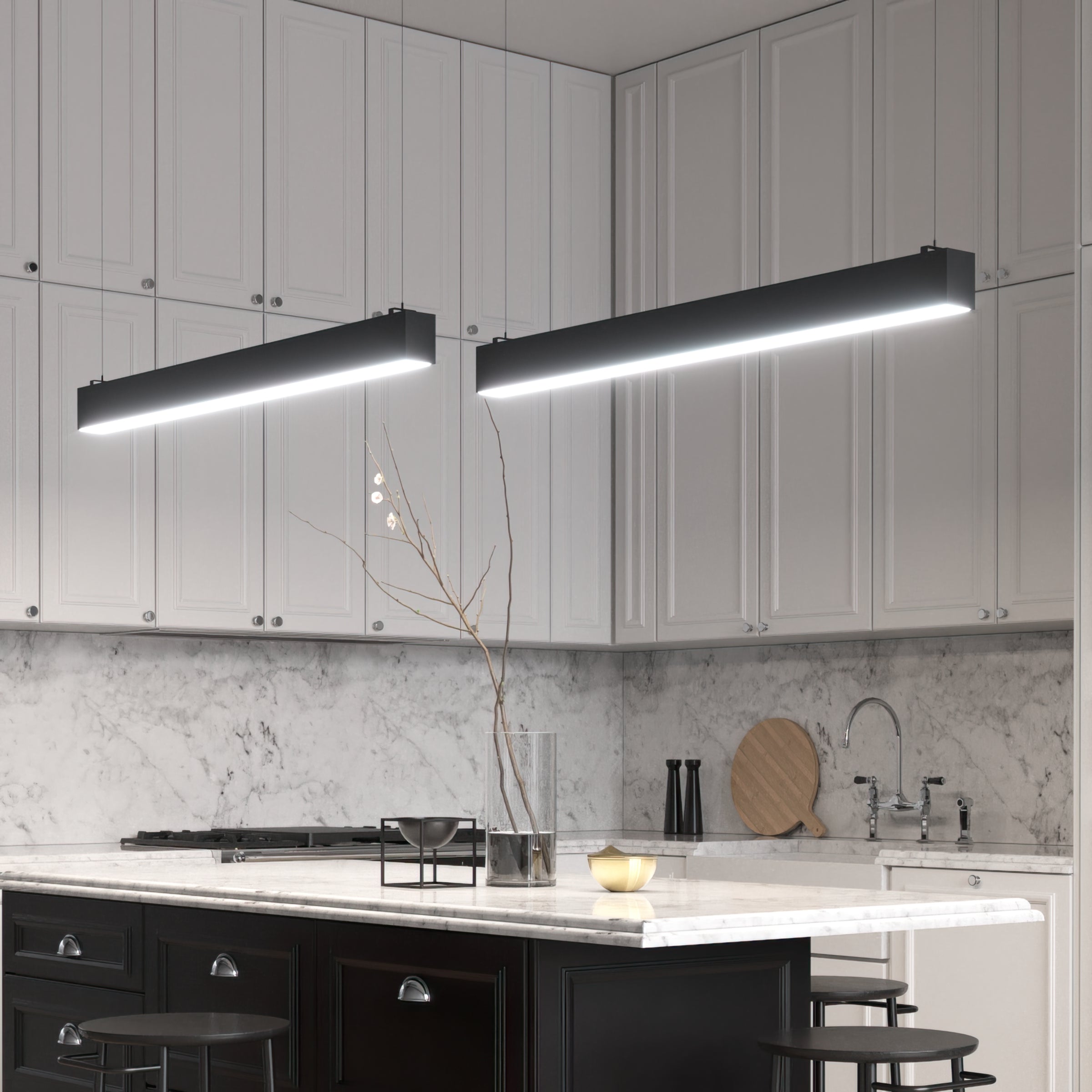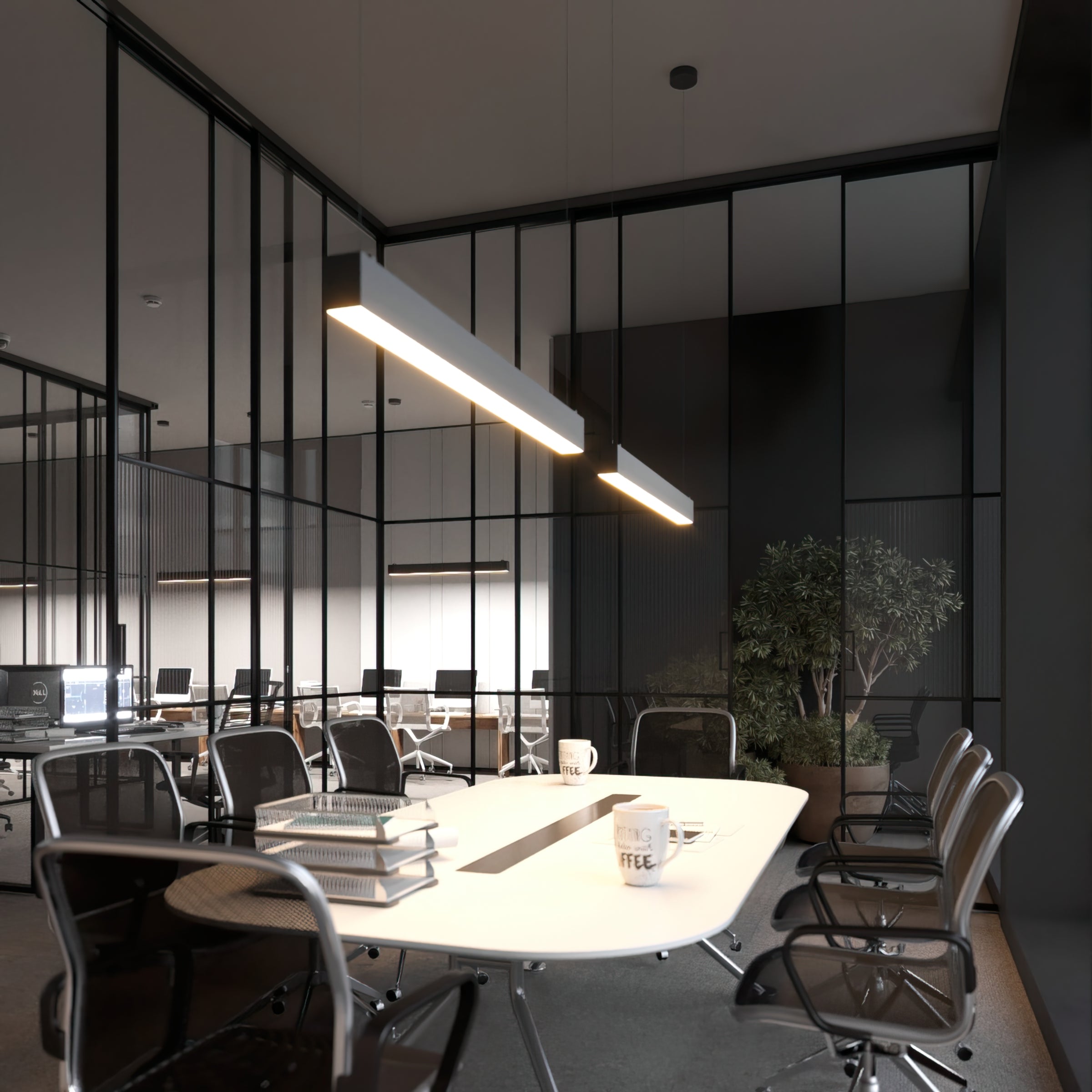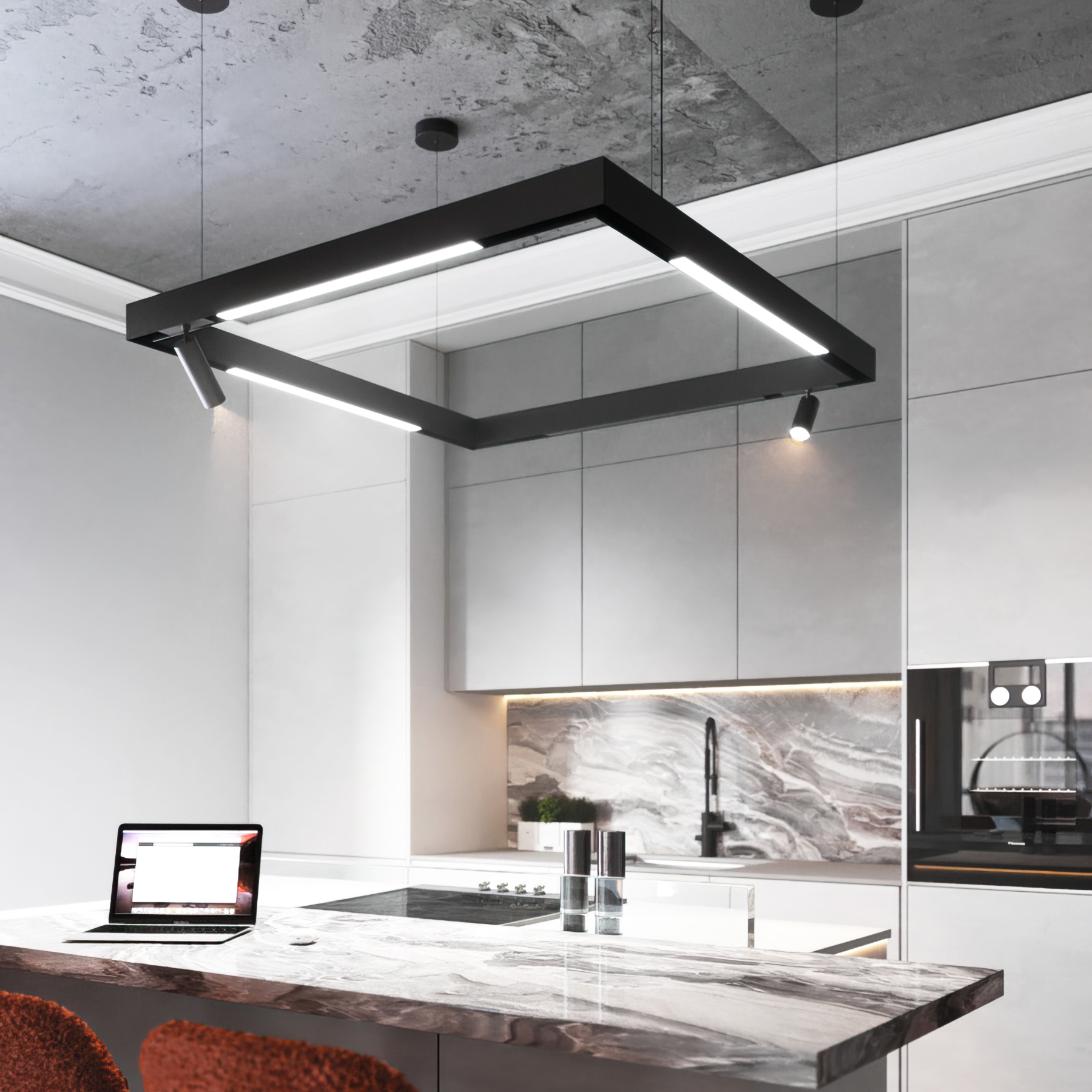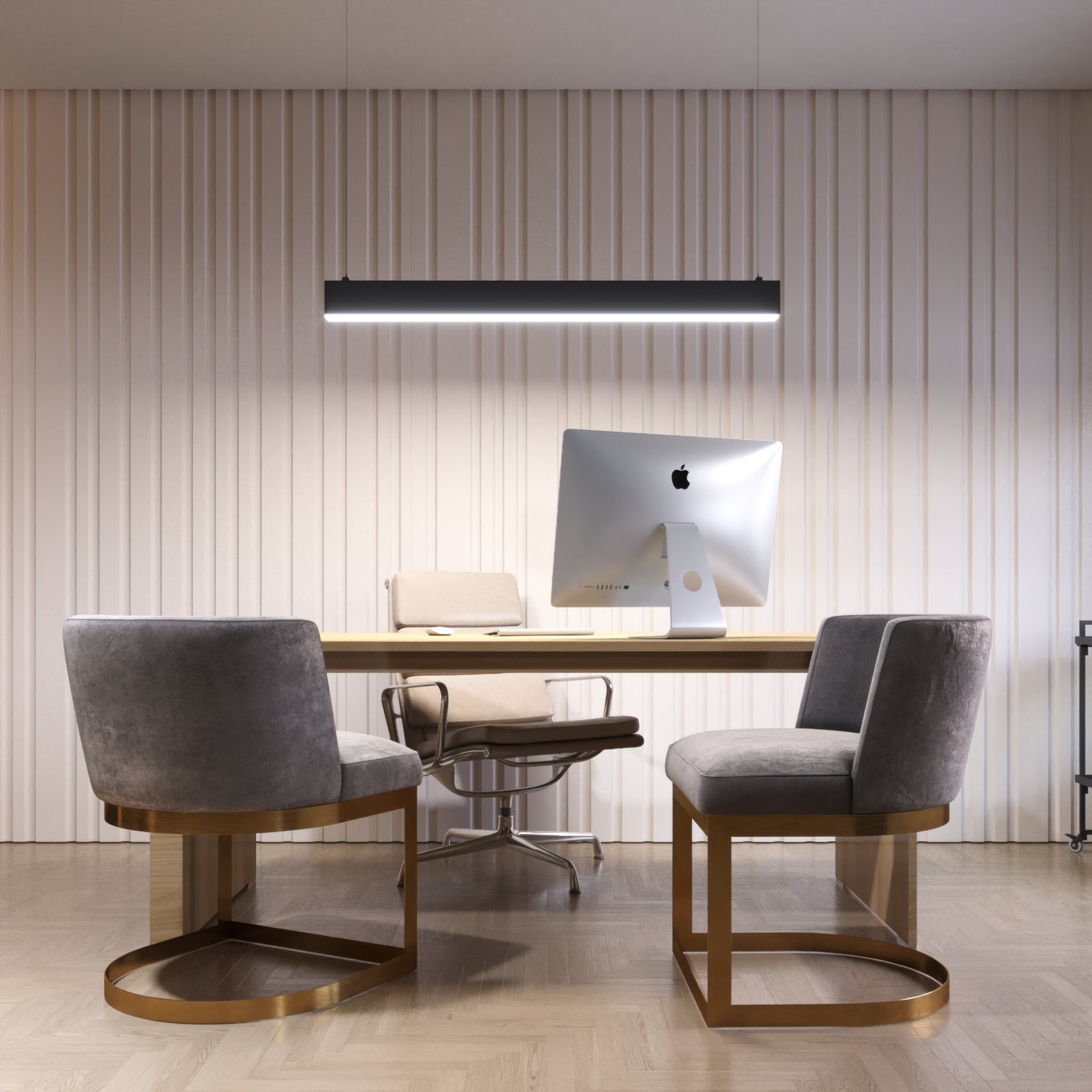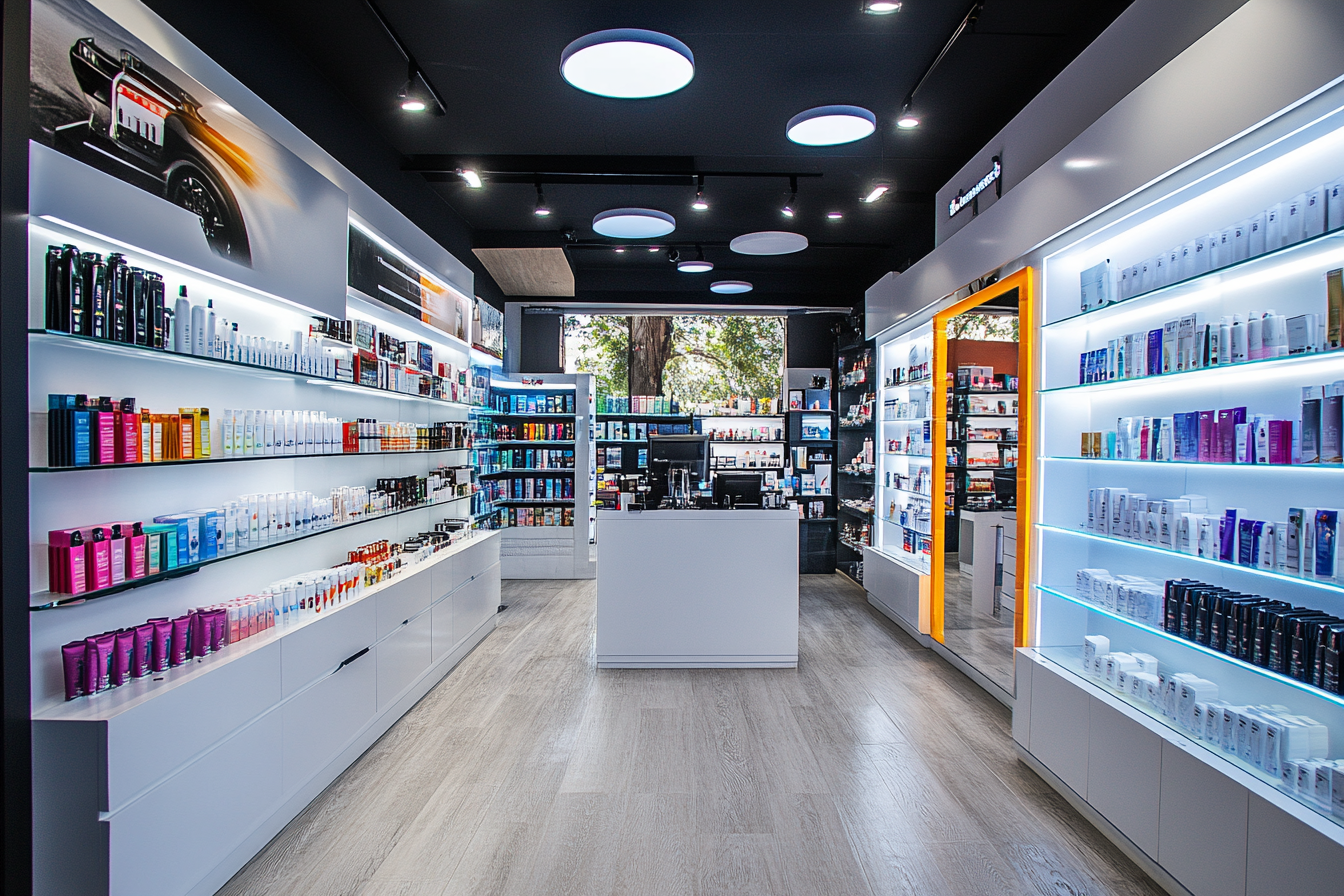For tiny local businesses, developing sensible retail lighting systems is difficult. Small business owners have to negotiate the complexity of lighting design while controlling limited resources and space constraints, unlike major retail chains with significant budgets and committed design teams. Their lighting choices become even more complicated under the strain of keeping cost-effective while competing with bigger companies.
Not only is proper lighting about illumination, but it's also a vital component that greatly influences consumer behavior and company performance. Well-designed commercial led lighting may direct consumer movement, emphasize items successfully, create a pleasant environment, and finally affect buying decisions. Strategic lighting becomes even more important for small enterprises because every square foot counts in optimizing the potential of their shop area.
Small businesses must carefully weigh maintenance costs and energy efficiency when considering retail lighting ideas. The challenge lies in finding the perfect balance between operational expenses, aesthetic appeal, and functionality. This is particularly crucial for local retailers operating with tighter margins, where each investment needs to deliver tangible returns through enhanced customer experience and increased sales.
Using magnetic track and semi-recessed lights to create stylish and comfortable lighting for a cosmetics store
Key Factors in Understanding Retail Lighting Needs
Designing affordable quality lighting solutions for small businesses requires careful evaluation of numerous important elements to produce a successful and efficient lighting plan. Knowing these components enables company owners to make wise judgments fit for their size, financial situation, and goals.
Assessing Your Space
Developing a good retail lighting plan starts with carefully evaluating your business space. This entails examining architectural elements, ceiling height, and physical characteristics that could influence lighting location. Just as crucial is knowing how natural light comes into and flows across your area all day. Properly integrated into your lighting design, windows, skylights, and other sources of ambient light can greatly affect your retail space lighting needs and help save energy expenditures.
The layout of your store—including wall displays, traffic flow patterns, and shelf configurations—also significantly influences the best location of lighting. These components affect the kind and strength of lighting required in various sections, enabling a coherent retail environment that moves consumers across your space with great efficiency.
Identifying Key Areas
Strategic lighting installation starts with determining important parts of your store space that call for particular attention. Since your main sales tool is a product display, they demand especially attention. While apparel areas might demand softer, more diffused lighting that precisely renders colors, different goods categories may call for different lighting approaches; jewelry and accessories benefit from focused, brilliant lighting that highlights detail.
Appropriate illumination for checkout counters, fitting rooms, and service areas helps jobs be completed while also keeping aesthetic continuity with the general store design. These sections should be brightly illuminated to guarantee staff efficiency and client comfort as well as to add to the whole atmosphere of the store. Particularly, point-of-sale systems require enough lighting to enable transactions and leave a good last impression as consumers pay for their items.
Selecting Appropriate Lighting Types
Retail spaces benefit from several kinds of lighting for businesses for different uses. Knowing these several lighting sources and their uses helps design a retail area that balances functional requirements with aesthetic appeal, therefore improving the shopping experience and supporting operational needs.
Enhancing the shopping experience with a blend of accent and ambient lighting in a fashion boutique
Ambient Lighting
Retail lighting design is based on ambient lighting, which provides general illumination, producing a pleasant and friendly environment. This foundation layer of lighting guarantees consumers may move the store safely and preserves a constant degree of brightness all around. Popular ambient lighting choices are pendant lights that mix utility with ornamental appeal and recessed lighting fixtures, which provide clean, even illumination free of visual clutter. Small businesses have embraced magnetic track systems because of their adaptability and simplicity of use when store designs change.
Task Lighting
In areas where meticulous work takes place, lighting is vital. To ensure accuracy and efficiency, areas with cash registers, fitting rooms, and merchandise racks need to be lighted with highly directional lighting. Semi-recessed fixtures are a stylish option that maintains the visual appeal of the store and provides the necessary illumination. At the same time, linear lighting fixtures installed above cash registers provide clear visibility for staff and customers while shopping.
Accent Lighting
Thanks to accent lighting, individual products or showcases can be highlighted. It can create a visual hierarchy in the retail space. The shopping experience can be greatly enhanced by improving the visibility of color, texture, and product details. Dynamic shelf displays would be perfect for track lighting systems since they provide flexibility in precisely orienting light where needed. Another current way to create spectacular product highlights while preserving energy efficiency is with ring LED light fixtures. When done correctly, accent lighting may turn average product displays into striking focal points, grabbing consumer attention.
Energy Efficiency and Sustainability
We asked Sergei Andreichenko, the specialist at LED Lights Direct.
Visit his LinkedIn profile for more insights.
Energy efficiency in the modern retail setting goes beyond mere cost reductions to include developing sustainable business practices that help the environment and your bottom line. With LED lighting technology providing unheard-of control over energy consumption and retaining exceptional lighting quality, small enterprises now view their lighting solutions differently.
Benefits of LED Lighting
LED lighting fixtures are a modern and optimal solution in lighting a room compared to traditional technologies. Thanks to their amazing energy efficiency, which can reduce energy consumption by up to 75% compared to conventional lighting systems. With standard retail working circumstances, these modern fixtures translate to nearly a decade of dependable service based on typical lifespans ranging from 50,000 to 100,000 hours.
Small business financial ramifications are significant. Although the initial outlay for LED technology may be more than for conventional lighting choices, the return on investment usually comes from lower energy bills and less maintenance needed in 18 to 24 months. Operating at lower temperatures, LED lights cut summer cooling costs and replace the often replaced lights linked with conventional lighting systems.
Implementing Smart Lighting Controls
Smart lighting control technologies represent the next big leap in making retail lighting more efficient. These advanced systems automatically adjust the lighting based on various factors like store hours, how many people are inside, and the amount of natural light available, all thanks to sensors and programmable controllers. Lighting can automatically dark to save energy while preserving security and visibility in less often visited areas or during off-peak hours.
Additionally, providing thorough energy consumption information, modern smart lighting solutions enable companies to see trends and maximize their lighting plans for the best efficiency. While occupancy sensors guarantee lights are only utilized as needed, features like daylight harvesting automatically change artificial lighting settings in response to available natural light. By an extra 20–30% beyond the previously attained savings with LED technology, these clever controls can lower energy consumption.
Enhancing Customer Experience
Beyond simple utility, the strategic placement of retail lighting is essential in determining the consumer experience and, hence, affecting shopping behavior. Well-designed lighting connects emotionally with consumers, motivates longer store visits, and finally generates sales by carefully weighing psychological and pragmatic elements.
Creating Ambiance
Establishing and preserving the intended ambiance in a retail environment is much aided by lighting. Together, color temperature, intensity, and distribution of light help to produce particular emotions that appeal to consumers. While colder lighting (4000–5000K) communicates a clean, modern look commonly desired in modern retail locations, warm lighting (2700–3000K) produces an intimate, friendly atmosphere fit for boutiques and specialized stores.
Store lighting should complement target customer tastes and brand identity. While bargain stores usually use more general, brighter lighting to show accessibility and affordability, luxury stores could choose dramatic accent lighting and subdued ambient illumination to create an exclusive ambiance. Knowing the expectations and buying behavior of your target market guides these important lighting choices.
Guiding Customer Flow
Strategic lighting design is a kind of invisible wayfinding system that gently guides customer flow across the business. While somewhat dimmer transitional zones generate visual paths that bring consumers through the targeted retail trip, brighter lighting in key promotional areas naturally attracts customer attention. Known as light layering, this approach aids in the natural flow that improves the shopping experience.
Shopping behavior can be very much influenced by particular lighting strategies. For instance, adding movable lighting to draw attention to seasonal displays or fresh arrivals immediately adds visual appeal. Higher light levels at the entrance area help to ease the change from external to interior lighting, enabling clients' eyes to adjust comfortably and provide an appealing first impression. While this is going on, well-placed accent lighting can bring attention to particular items or create pleasing shadow patterns that accentuate displays' visual appeal, hence increasing product interaction.
Practical Considerations
Small business owners employing retail lighting solutions have to carefully strike a balance between their dreams and reality. Knowing these factors helps to guarantee effective application while preserving operational efficiency and financial sustainability.
Examples of different lighting types in a retail store, enhancing product displays, guiding customer flow, and creating a welcoming atmosphere
Budget-Friendly Lighting Solutions
There is no necessary sacrifice of quality in cost-effective lighting systems. Strategic decisions and progressive application help small businesses to reach professional goals. Starting with key sections and progressively extending the lighting system helps to better control expenses while yet preserving architectural integrity. Think about choices, including multi-purpose fixtures meeting both ambient and accent lighting needs or modular lighting systems that are expandable over time.
Lighting improvements usually have a return on investment that goes beyond only energy savings. Through better product presentation, improved customer experience, and longer store visits—which all contribute to increased sales—improved lighting can Strategic lighting enhancements have been demonstrated to increase sales by 1-10%, hence even with minimal resources they are a valuable investment. When computing ROI, take into account things like decreased energy expenditures, less maintenance, and maybe rising customer satisfaction and sales performance.
Maintenance and Upkeep
Maintaining the performance and lifetime of retail lighting systems depends on regular maintenance. Create a routine for cleaning fixtures since trash and dust can greatly lower light output and efficiency. This should cover monthly dusting from exposed surfaces and quarterly deep cleaning of fixtures. Focus especially on accent lighting and exhibit places where low illumination would directly affect product visibility.
Replace lights methodically, recording installation dates and estimated lifespans to avoid unplanned breakdowns. For areas of the store, think about group relamping to keep constant light levels and cut maintenance time. By routinely checking controllers, wiring, and fixtures, you can find any problems before they become major ones, therefore guaranteeing the ongoing best operation of your lighting system.
